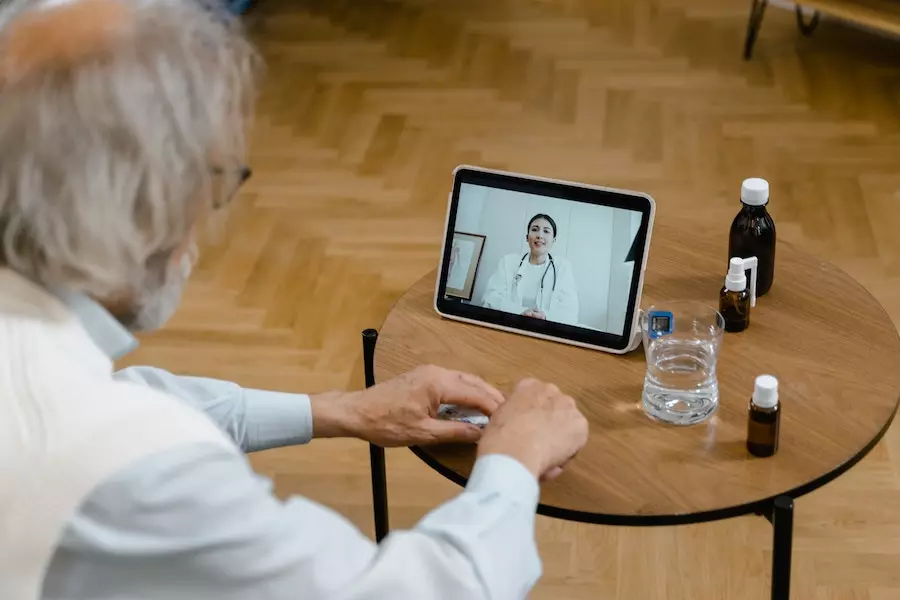
Before the global coronavirus pandemic, telehealth served as a relatively small healthcare niche. At the same time, many people regarded it as a nice-to-have service provided for a particular number of specialties. On the other hand, skeptical business experts claimed that a partnership with a telemedicine app development company is inefficient and slow to adopt. But the COVID-19 crisis changed perceptions worldwide since proper care accessibility care became vital.
Medical organizations intend to leverage telemedicine opportunities and connect with their patients remotely. Today, when they start working in a new landscape, they find it critical to cooperate with telehealth software agencies like Exoft to remain competitive and ensure high-quality patient experience. After all, utilizing telemedicine solutions leads to positive health outcomes, improves access to care, and helps satisfy evolving patient requirements.
Pre-Pandemic Telemedicine
The Centers for Disease Control and Prevention report shows that during the first three months of 2019, telemedicine visits were 50% lower compared to the relevant period in 2020. However, at that time, the existing reimbursement models for such services were full of complications and restrictions. For instance, in the United States, only several rural areas were recognized as eligible to receive telehealth care and reimbursement.
Besides, there were some licensing-related confusions, so patients and healthcare vendors had concerns about the security and the positive impact of telehealth visits.
Early-pandemic telemedicine
Since the coronavirus pandemic provoked significant disruptions regarding patient care, the relevant obstacles forced numerous healthcare providers to quickly implement telemedicine tools. Thus, the U.S. Congress established the requirements for digital health services that extended fully reimbursable procedures.
Also, there was temporary permission for non-HIPAA-compliant platforms, including Skype and Zoom, to be used for telemedicine services unless they became public-facing. And thanks to lifting so many burdens, almost 80% of independent healthcare companies started offering telehealth by the end of 2020.
The rapid increase of telemedicine brought healthcare providers a robust solution that allowed for keeping themselves safe and enhanced care accessibility throughout different population groups. Health equity was another significant advantage since about 89% of American adults owning smartphones obtained the chance to easily maintain communication with their doctors. That undoubtedly resulted in improving healthcare outcomes and ensured convenience because of eliminating barriers like distance and time. After all, telemedicine brought quality care options even to several medically underserved communities.
What about patients – they enjoyed all the benefits offered by telehealth and changed their preferences toward remote care. That is because they highly appreciated the opportunity to keep in touch with their physicians right from their homes. And there was no more need for patients to waste time waiting for doctors in clinic rooms.
But although telemedicine guarantees convenience, patients also wanted to have the proper protection of their sensitive data. During the pandemic’s beginning, non-HIPAA-compliant products created some critical challenges related to information security. For instance, many vendors had no seamless experience and expertise in working with clinical data and managing video conferences. So, there was a large amount of manual, time-consuming work for personnel associated with fixing different issues.
Telemedicine Today
Telemedicine has offered efficient practices to enhance patient engagement across all steps of their care journey. That contributes to strengthening clinical outcomes and overall practice operations. By automating appointment reminders, boosting digital intake forms, and using note-taking options, telemedicine has allowed patients and doctors to connect easily.
Also, since the pandemic’s start, telemedicine has evolved and offered many advancements to create functions for meeting the needs of healthcare organizations and their patients. For example, integrated telehealth platforms bring secure communication channels. These tools enable practitioners to assess health-related charts during online visits. Such an approach is vital for the further success and long-term utilization of telemedicine.
In addition, many features, including provider-specific rooms and virtual waiting rooms, help streamline operation procedures, which makes the patient experience better. At the same time, those healthcare facilities that have implemented automated appointment reminders via text messages or email letters demonstrate a reduced number of patient no-shows. With this feature, healthcare vendors provide more efficiency to mental health therapies, different therapies, and parents who must accompany their children.
Ultimately, independent healthcare organizations have started adopting strategic initiatives to improve their telemedicine services. Therefore, they create new execution strategies, outline goals, and choose the right tech partner to increase the quality of their telehealth operations. Besides, thanks to customization opportunities, they can enhance internal document management as well as patient-facing communications. The relevant tools are crucial to provide modern healthcare services promoting patients to come back.
The Future Of Telemedicine
So, what awaits telemedicine tomorrow? The truth is that telehealth and its influence on global healthcare have a bright future. Its constant utilization will help improve the services’ quality and reduce healthcare expenditures, which is extremely advantageous not only for patients and vendors but also for national governments. For instance, developing at-home diagnostics and increasing top-notch virtual visits can enhance general health outcomes and cut down costs for patients with various chronic diseases.
Moreover, the healthcare industry continues to uncover new technologies and tools and leverage telemedicine daily. Among such tools are webinars supporting proactive and preventative care and educating patients. But most importantly, telehealth will expand care accessibility toward unserved communities, particularly rural ones, and specific population groups worldwide.
To sum up, proper care delivery is expected to evolve constantly and consider patients the core of emerging telemedicine tools and offerings. It means that healthcare vendors are encouraged enough to utilize telehealth solutions and get relevant benefits, which is also vital for better patient experience and engagement.


